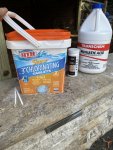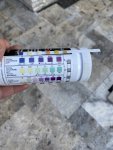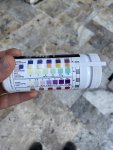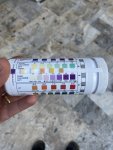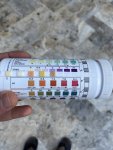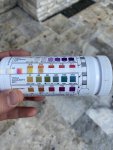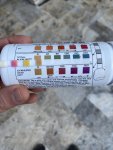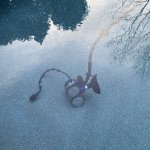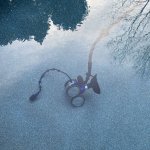The 2006C is great. You don't need the pH tester. Hold off on that for now. Add "Taylor: K-2006 and K-1766 Test Kits, SpeedStir" to your signature, if that is the salt test you bought.
FC stands for "Free Chlorine," so the FC level is how much chlorine is in the water, and the FC test is used to determine that. If you're swimming in the water (or using the spa), you need to know your FC level and maintain it at a safe level. And we need to know how much CYA is in the water to help you determine what your FC level should be.
You missed a few quesions:
Who is maintaining chlorine level right now? You or the PB? Per your contract with the PB, is he to handle all the chemicals for the first month, or are you supposed to be doing that?
We need to know the type of tabs you're using. Tell us what the package says, or post a picture of the label.
Get to reading the links Kim and I gave you. Read all about FC and CYA and the FC/CYA relationship. We can help you a lot with all that stuff, but ya gotta do your homework, too!

If you read Pool School and "don't get it," that's OK. Read it again. Most of us were in the same place, and have read it at least twice. If you have questions about FC, just ask.
Tell us when your kit arrives. TFP doesn't teach "shocking the pool," so you won't be doing that, we maintain FC by testing what is already in the pool and then adding what is needed using liquid chlorine. So be sure to have some liquid chlorine on hand. Don't store it near the Muriatic acid you've been using. As per when to add other chemicals, that depends on the answer to the question about who is responsible for doing that, you or the PB.




